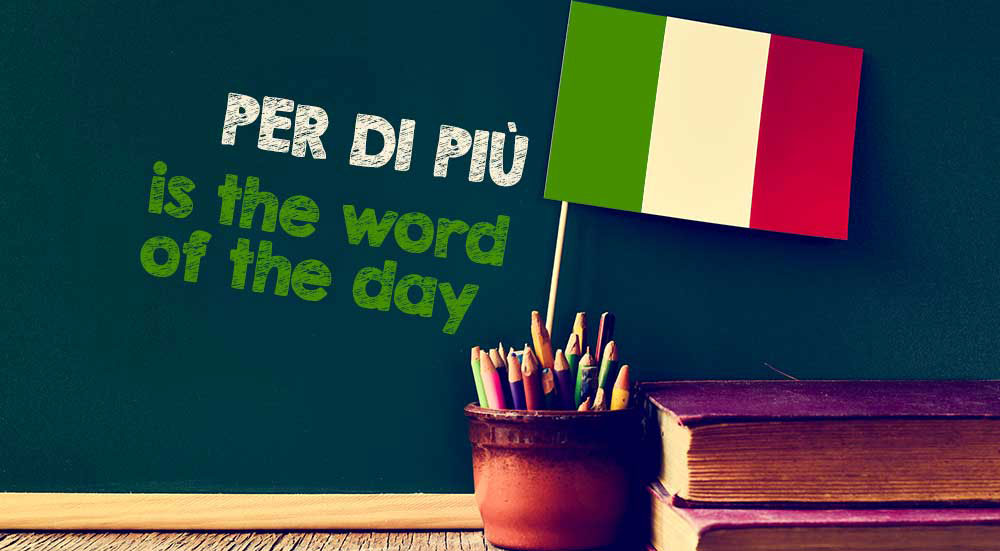The Italian expression per di più (pair dee peeoo) is typically used to introduce additional information, emphasizing that it supports or enhances the previous statement.
In English, per di più can be translated in several ways, depending on the context, such as “moreover,” “in addition,” “furthermore,” or “what’s more.”
The origins of “per di più” are deeply rooted in the Italian language. The phrase is composed of three parts: per, a preposition meaning “for” or “by”; di, meaning “of”; and più, which translates to “more.” These components, as is usual in Italian, are derived from Latin, and while it is challenging to pinpoint the exact moment this phrase entered common usage, its Latin roots indicate that it has been part of the Italian lexicon for centuries, evolving naturally over time.
In practice, per di più is used to enhance communication by linking statements and adding depth to the conversation. For instance, one might say, Ho finito il lavoro, e per di più ho pulito tutta la casa, which translates to “I finished the work, and what’s more, I cleaned the whole house.” This use of the phrase underscores the additional effort made beyond completing the work.
Another example can be found in the sentence, È un ottimo cuoco, e per di più parla quattro lingue, meaning “He is an excellent cook, and moreover, he speaks four languages:” here, per di più serves to highlight an additional impressive quality of the individual.
Similarly, the expression can enhance a positive review, such as in Il film era interessante, e per di più la colonna sonora era fantastica, translating to “The movie was interesting, and in addition, the soundtrack was fantastic.”
- Ha superato l’esame con il massimo dei voti, e per di più ha ricevuto una borsa di studio
- He passed the exam with top marks, and what’s more, he received a scholarship
- Il ristorante offre ottimo cibo, e per di più i prezzi sono molto ragionevoli
- The restaurant offers great food, and in addition, the prices are very reasonable





























